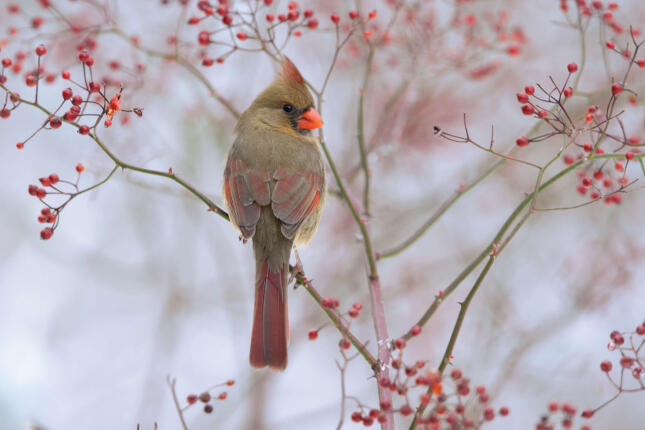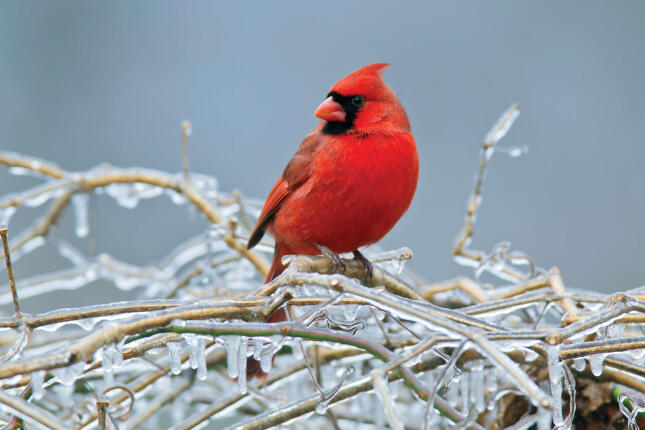Bird of the Month: Northern Cardinal
|
Our Bird of the Month for December is the Northern Cardinal! A bright spot at any feeder, Cardinals are fairly common in the Midwest and East Coast but celebrated all the same. While the changing of seasons will cause many other birds to migrate, Cardinals will spend the winter in a flock, foraging in a group. While Cardinals can feed throughout the day, they mostly tend to visit feeders at dusk and dawn. Cardinals prefer shrubs and bushes for cover while they forage for food, exhibiting a few ground-feeding tendencies despite also enjoying food found in birdfeeders. Both the male and female sing and use their songs to warn each other of threats while the other is out finding food. Mated pairs will even sing duets! What do they eat?Cardinals primarily eat seeds and fruit, though they will catch their fill of insects in the summer. They are fond of black oil sunflower seeds and seem to enjoy the act of flexing their beak strength as they crack the shell of the seed. They also enjoy peanut splits, and they’ve been known to go crazy for Bark Butter! Staff ThoughtsGinger: “I’m delighted to get strikingly beautiful cardinals frequently visiting my window feeder. This year during nesting season the same mated pair visited several times a day and I also observed the male feeding the female. It was thrilling when one day that same pair showed up with their little fledgling who they would feed in the nearby tree until the little one figured out how to land at the feeder.” Julie: “A favorite when they visit my tray feeder, often as a couple. They pick out sunflower and safflower seeds and sometimes feed each other!” Michael: “I couldn’t help but think of a card that a dear friend recently gave me with a Cardinal on the front with the following: Brilliant and cheerful, Nick: “My wife and I have enjoyed watching our local Cardinal family take turns at different feeding stations. Watching them share seeds was also a highlight, especially when we noticed a juvenile earlier in the year!” |
|
Share your photos of Northern Cardinals at your feeders with us in-store or on our Facebook or Instagram pages!


